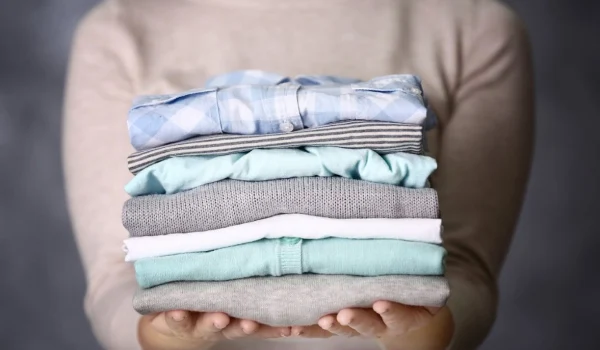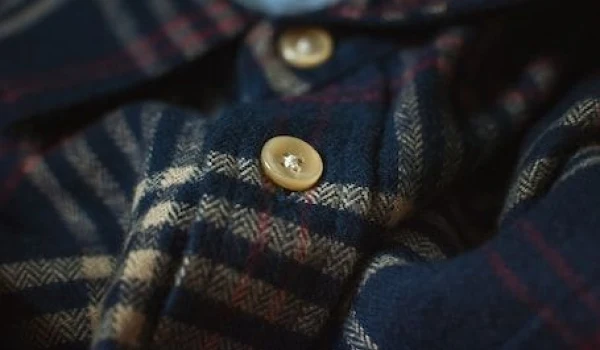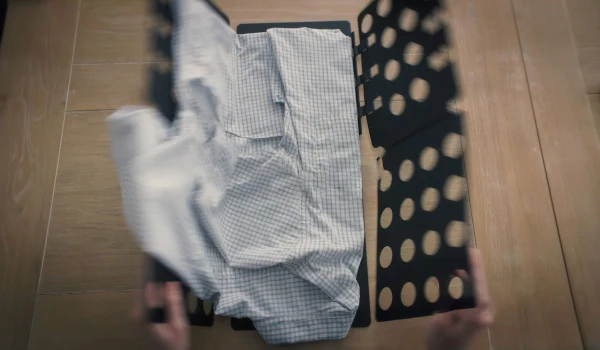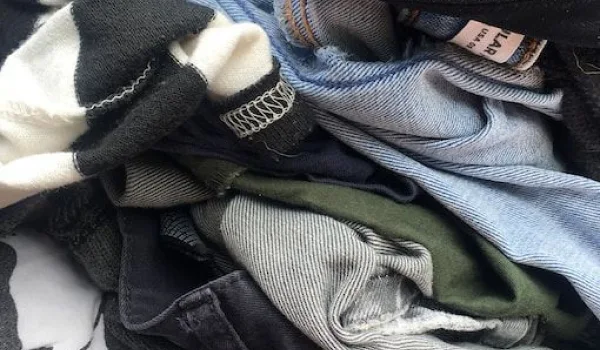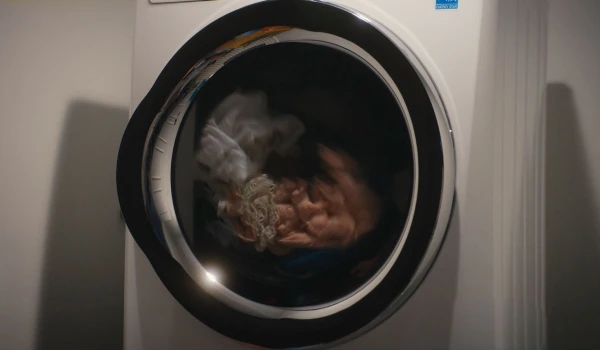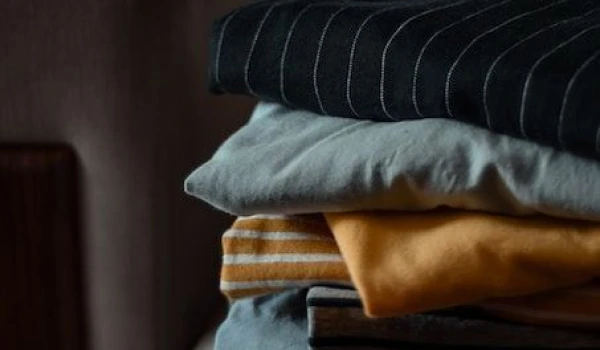Introduction
Do you ever look at the cycle selector on your washing machine and wonder what that sorcery is? Understanding washing machine cycles can be pretty intimidating, especially with new heavy-duty washing machines that come with all sorts of complex options.
When do you use each washing machine setting? Is there one for delicates or woolens? What is the difference between a pre-wash and a normal wash?
All these questions might have gotten your head spinning. But worry not, we'll guide you through laundry settings on your washing machine. Using the right ones will not only keep your clothes looking good for longer, but it will also help save water and energy.
Keep reading to learn all you need to know about your washer settings!

The 7 Washing Machine Cycles Explained
It's not rocket science, but understanding a new washer or dryer can be tricky. However, irrespective of the washer type, it should have the following wash cycles:
Normal
Unless you're a washing machine guru, you probably use the normal cycle on your washer. Most people are on the same page as you.
The normal cycle is a long cycle that works wonders for everyday clothes, like t-shirts, underwear, socks, pants, and cotton garments. It has high agitation and spins to extract most of the water from the load. As a result, this should be your go-to cycle for laundry, especially if most of your clothes are mixed fabrics, linen, and cotton.
Although the actual wash cycle depends on your washing machine, most washers run for an hour on a normal cycle.
Speed or Quick Wash
Most modern washing machines also have a speed wash setting, which is shorter than the normal cycle. You should use this setting if you're cleaning:
- Lightly soiled clothes
- Clothes that were forgotten in the washer or dryer and need to be rewashed
- Small laundry loads
A quick wash cycle is followed by a high-speed spin cycle to dry clothes faster. On average, the quick wash cycle runs from 15 to 40 minutes.
Heavy Duty
If you want to clean heavily soiled clothes or fabrics like towels, bedding, and linen, you should switch to the heavy-duty cycle. It runs for ~1 to 2 hours, depending on your washer.
There's a speedy spin cycle at the end of the heavy-duty cycle that helps remove most of the water from heavy fabrics.
Bulky
Have you ever struggled with your kids' clothes after they spent the whole day playing outside in muddy puddles and dirty playgrounds? You put the clothes through the normal cycle, but the stains just don't come out?
It's time to switch to the bulky cycle. In this setting, the washer agitates at a lower speed than usual and with larger amounts of water, which helps flush out stubborn dirt from your clothes.
The bulky cycle is also ideal for cleaning larger items like sleeping bags, comforters, and blankets. Do note that the cycle uses more water than usual, so you shouldn't run it too often to avoid overconsumption of resources and hefty utility bills.
Bedding and Sheets
Not every washing machine has a bedding and sheets cycle, but if yours does, you're golden. As the name implies, the setting is suitable for bedding, sheets, and large pieces of clothing like curtains.
If you want to wash curtains or drapes on this setting, we'd recommend checking their labels first. If they are made of delicate materials like silk, satin, or rayon, they might have to be taken to the dry cleaner instead and avoid getting damaged in a washing machine.
Delicate or Hand Wash
The delicate cycle is where the silk and cashmere items come in. It is suitable for lightweight fabrics like wool, sheer nylon, lingerie, hosiery, and other delicate materials.
Your washing machine will use warm or cold water and low-to-no spin for these fabrics. The cycle usually lasts for 1 to 1.5 hours.
Rinse and Spin
If a washing machine cycle does not remove detergent from the clothes, you can run the rinse and spin cycle. It removes residue materials from clothes while also rinsing away excess dirt, bacteria, and sweat.
You can also use this cycle to rinse soiled clothes before putting them in a heavy-duty or bulky cycle.

Decoding Washer Settings
Apart from washing machine cycles, there are a few other settings you should be aware of:
Water Temperature
Back in the day, you'd have to put dark and bright colors in cold water and whites in hot water. Nowadays, things are different. Modern detergents can clean pretty much any fabric with cold water. But sometimes, you will need hot water.
Hot water works for grease-stained, heavily soiled clothes, bed linens, and white cotton. Just make sure the temperature does not exceed 140°F (60°C) for most fabrics.
For regular laundry, stick to cold water.
Spin Speed
The spin speed of a washing machine is measured in revolutions per minute or RPM. A "revolution" is one full rotation of the drum. The faster the spin, the more water will be removed from the clothes.
A lower RPM is best for delicate items like lingerie. Higher RPM is recommended for towels, jeans, and similar clothes.
By default, washing machines are set to 1200 RPM-1400 RPM. This is suitable for most fabrics and wash cycles.
Soil Level
The soil level is the level of soil or dirt on your clothes. It differs across washing machines, but generally, you have the option of choosing between low, medium, and high. Choose the settings based on how dirty your clothes are.
Water Level and Auto Sensing
A standard top-load washer uses between 30 and 45 gallons of water in each cycle. But if you get an Energy Star-certified washing machine, you'll save a lot of water. It will use approximately 14 gallons in each cycle.
Most washing machines have an auto-sensing setting where they measure the load and adjust the water level accordingly. Alternatively, you can increase the water level manually for heavier loads and reduce it for lighter ones.
Steam Clean
The steam clean setting on your washer removes grime and stains from the clothes while reducing wrinkling and the risk of shrinking. Use this setting to sanitize your clothes or remove musty smells from them.
Extra Options
Some newer washers have additional options like pre-wash, soak mode, delayed start, and sanitize. Although most of them are self-explanatory, we'll explain a few:
- OptiWash: A feature in Samsung washers, OptiWash uses an advanced algorithm to get the most out of each load. It adds more laundry detergent or time (to the cycle), depending on how soiled your clothes are.
- Delayed Start: By selecting this option, you can set your washer to delay its start for a pre-arranged cycle. For example, if you want your washing machine to run a cycle while you're at work the next day, you can set it to start when you're away.
- Pre-Wash: It's a cold water cycle that helps remove any dirt and stains before the main wash cycle.
- Eco-Mode: When you turn on this mode, the washer automatically adjusts the cycle time, water level, and temperature to conserve energy.
- Soak Mode: In the soak mode, the clothes stay soaked in detergent water for some part of the cycle before the actual washing starts. For instance, according to Samsung, in a 42-minute wash cycle, 15 minutes will be the actual washing time, while the garments will be soaked for the initial 27 minutes.

More Expert Tips with Rinse
Understanding everything from laundry symbols to agitator settings and washer cycles will help you wash your clothes properly and save energy. Part of the reason your favorite cardigan gave up on you might be because of an improper wash routine.
The best way to ensure the longevity of your clothes is to use the right washer cycles every time. More importantly, follow the manufacturer's instructions on the tag.
It may seem like doing laundry is an art and learning to do it properly can take time. If you need any assistance, check out Rinse's expert advice for more. However, if you don't have time for laundry or simply want to give yourself a weekly treat, consult our professional laundry service for a hassle-free experience.
Contact us at Rinse today to see our skill in action.

Have laundry or dry cleaning to do?
Rinse picks up, cleans and delivers 7 days a week. Amazingly awesome. Ridiculously simple.



